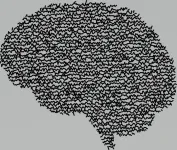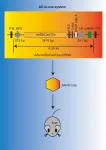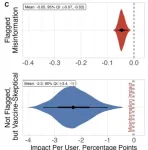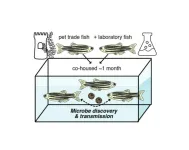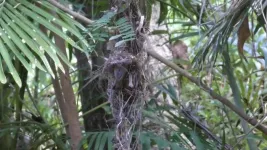(Press-News.org) Factual yet misleading vaccine content was 46 times more effective at driving vaccine hesitancy than flagged misinformation, reports a new study exploring real-world impacts of misinformation exposure. A second study aiming to better understand the characteristics of “supersharers” – a small group of individuals increasingly found to spread misinformation – reports that just over 2,000 supersharers on X (formally Twitter) spread 80% of the fake news during the 2020 US presidential election; the study involved a sample of more than 660,000 voters on X and uncovered that the supersharers were mainly middle-aged Republican women in conservative states.
Misinformation, particularly that spread widely across social media, is considered a substantial threat to science, public health, and democratic processes worldwide. Despite this, the real-world impact of exposure to misinformation remains unknown. What’s more, the characteristics and the scale of influence of those who spread misinformation most are hard to pin down. Here, in two separate studies, authors address these knowledge gaps through quantitative analyses. Their findings offer insights for designing more effective strategies to curtail the spread of misinformation.
In one study, Jennifer Allen and colleagues evaluate the impact of factually accurate but deceptive vaccine-related links shared on Facebook during the rollout of the first COVID-19 vaccine in 2021. Low vaccine uptake in the US has been widely attributed to social media misinformation. Although the impact of conspicuous vaccine misinformation was curbed once flagged and debunked as false by Facebook’s third-party fact-checkers, more ambiguous content – the factual but potentially misleading vaccine-skeptical content from credible sources – often went unflagged. An example of this true-but-misleading content is a story published in the Chicago Tribune: “A ‘healthy’ doctor died two weeks after getting a COVID-19 vaccine; the CDC is investigating why.” Although there was no evidence that the vaccine had anything to do with the death, the framing of this headline falsely implied causation. The story was viewed by nearly 55 million people on the platform. Using a combination of lab experiments, crowdsourcing, and machine learning to estimate the causal effect of 13,206 vaccine-related URLS on the vaccination uptake of roughly 233 million US Facebook users, Allen et al. found that unflagged misinformation was 46 times more consequential for driving vaccine hesitancy than content flagged as misinformation.
In the second study, Sahar Baribi-Bartov and colleagues investigate who was responsible for spreading misinformation about voting during the 2020 US presidential election on X. According to the authors, little is known about the spread of fake news by individual users. Baribi-Bartov et al. evaluated supersharers on Twitter and found that in a sample of 664,391 US registered voters, only 2107 accounted for 80% of the fake news shared on X during the 2020 US presidential election. In a demographic breakdown of these individuals, the authors found significant over-representation of Republican middle-aged white women residing in three largely conservative states – Arizona, Florida, and Texas. These individuals were more often from neighborhoods that were generally poorly educated but relatively higher-income. Moreover, the authors discovered that the supersharers’ massive volume of content promotion was generated through manual and persistent retweeting. One of the key findings in the study is that these supersharers – despite making up a small percentage of users – received more engagement than regular users and are highly connected and influential, reaching roughly 5.2% of registered voters on the platform.
In a related Perspective, Sander van der Linden and Yara Kyrychenko discuss each study and their limitations in greater detail.
For reporters interested in trends, a January 2019 study in Science evaluated the proliferation of fake news on X during the 2016 election cycle.
END
Studied on social media: The real-world impacts of factual but misleading content & the characteristics of “supersharers”
2024-05-30
ELSE PRESS RELEASES FROM THIS DATE:
Why some nest-invading cuckoo birds have higher rates of speciation
2024-05-30
Cuckoos – which lay their eggs in nests of other birds – have higher speciation rates when they lay their eggs in a broader range of host bird species’ nests, a new study reports. This higher speciation rate is driven by host rejection and cuckoo selection for mimetic nestling traits. How new species arise is a fundamental question in biology. Coevolution between closely interacting species is thought to increase biodiversity and potentially explain the vast number of distinctly specialized species. However, evidence linking macroevolutionary patterns to microevolutionary ...
Living bioelectronic device monitors and manages psoriasis in mice
2024-05-30
Coupling skin bacteria-laden hydrogel and electronics, researchers have introduced the ABLE platform, a bioelectronics system that can deliver management and adaptive treatment of skin inflammation. They test this approach in a mouse model of psoriasis. The findings demonstrate the potential for clinical application of bioelectronics devices that promote drug-free therapeutic effects through a living hydrogel interface. “This amalgamation of living and synthetic components is a notable advance toward ...
Model reveals global patterns of organic decomposition in rivers
2024-05-30
Integrating big data and a coordinated global field experiment, researchers have developed a model that can predict the decomposition rate of organic matter in rivers worldwide. The global model estimates decomposition rates in rivers across vast understudied areas of Earth, revealing rapid decomposition across continental-scale areas dominated by human activities. Earth's terrestrial ecosystems generate over 100 billion tons of plant detritus annually, with its fate – long-term storage, mineralization to greenhouse gasses, or incorporation into food webs – determined by decomposition rates. This organic material is continually added to rivers ...
Is your coffee ‘not hot’ or ‘cold’? Observing how the brain processes negated adjectives
2024-05-30
Negating an adjective by placing ‘not’ in front of it affects the way our brains interpret its meaning, mitigating but not entirely inverting our interpretation of its definition. In a study published May 23rd in the open-access journal PLOS Biology, Arianna Zuanazzi at New York University, US, and colleagues offer insight into how the brain represents changes of meaning over time and offer new methods for further linguistic research.
The way the brain processes negated adjectives — ‘not bad’ or ‘not ...
New, modified CRISPR protein can fit inside virus used for gene therapy
2024-05-30
Researchers have developed a novel version of a key CRISPR gene-editing protein that shows efficient editing activity and is small enough to be packaged within a non-pathogenic virus that can deliver it to target cells. Hongjian Wang and colleagues at Wuhan University, China, present these findings May 23rd in the open-access journal PLOS Biology.
Recent years have seen an explosion of research attempting to harness CRISPR gene-editing systems—which are found naturally in many bacteria as a defense against viruses—so they can be used as potential treatments for human disease. These systems rely on so-called CRISPR-associated (Cas) proteins, with Cas9 and Cas12a being ...
Misleading COVID-19 headlines from mainstream sources did more harm on Facebook than fake news
2024-05-30
CAMBRIDGE, Mass., May 30, 2024 – Since the rollout of the COVID-19 vaccine in 2021, fake news on social media has been widely blamed for low vaccine uptake in the United States — but research by MIT Sloan School of Management PhD candidate Jennifer Allen and Professor David Rand finds that the blame lies elsewhere.
In a new paper published in Science and co-authored by Duncan J. Watts of the University of Pennsylvania, the researchers introduce a new methodology for measuring social media content’s causal impact at scale. They show that misleading content from mainstream news sources — rather than outright misinformation or “fake news” ...
Historic iceberg surges offer insights on modern climate change
2024-05-30
(Santa Barbara, Calif.) — A great armada entered the North Atlantic, launched from the cold shores of North America. But rather than ships off to war, this force was a fleet of icebergs. And the havoc it wrought was to the ocean current itself.
This scene describes a Heinrich Event, or a period of rapid iceberg discharge from the Laurentide Ice Sheet during the last glacial maximum. These episodes greatly weakened the system of ocean currents that circulates water within the Atlantic Ocean. The Atlantic Meridional Overturning Circulation, or AMOC for short, brings warm surface water ...
Reexamining misinformation: How unflagged, factual content drives vaccine hesitancy
2024-05-30
What threatens public health more, a deliberately false Facebook post about tracking microchips in the COVID-19 vaccine that is flagged as misinformation, or an unflagged, factual article about the rare case of a young, healthy person who died after receiving the vaccine?
According to Duncan J. Watts, Stevens University Professor in Computer and Information Science at Penn Engineering and Director of the Computational Social Science (CSS) Lab, along with David G. Rand, Erwin H. Schell Professor at MIT Sloan School of Management, and Jennifer Allen, 2024 MIT Sloan School of Management Ph.D. graduate ...
Novel virus identified in zebrafish from the pet trade causes disease in laboratory fish
2024-05-30
Zebrafish in the pet trade are asymptomatic carriers of previously undescribed microbes, including a novel virus that causes hemorrhaging in infected laboratory fish, Marlen Rice from the University of Utah, US, and colleagues report in the open-access journal PLOS Biology, publishing May 23rd.
Zebrafish (Danio rerio) are a common laboratory research animal, and they are also widely available as pets. In research laboratories, they are kept in specialized aquaculture facilities to prevent infectious disease, but zebrafish are occasionally ...
Cuckoos evolve to look like their hosts - and form new species in the process
2024-05-30
The theory of coevolution says that when closely interacting species drive evolutionary changes in each other this can lead to speciation - the evolution of new species. But until now, real-world evidence for this has been scarce.
Now a team of researchers has found evidence that coevolution is linked to speciation by studying the evolutionary arms race between cuckoos and the host birds they exploit.
Bronze-cuckoos lay their eggs in the nests of small songbirds. Soon after the cuckoo chick hatches, it pushes the host’s eggs out of the nest. The host not only loses all its own eggs, but spends several ...
